Day 24 - Impressions of Ireland
After 24 unforgettable days in Ireland, we find ourselves catching our breath and reflecting on a journey rich with history, beauty, and wonder. From windswept cliffs to mossy ruins, winding country roads to lively city streets, we’ve wandered through the soul of a country that wears its past proudly and its myths like a second skin. We explored grand castles like Kilkenny, Cahir, and Blarney, and walked the silent stones of Glendalough, Fore Abbey, and the Hill of Uisneach. We marveled at feats of ancient engineering at Newgrange and Knowth, stood where gods once walked at the Hill of Tara, and traced the winding legends of giants at the Causeway and brave chieftains in Dublin.
We’ve traveled by train, by car, and on foot — dodging sheep, tasting fudge in the Burren, whispering through ancient passage tombs, and listening to tour guides who somehow made the centuries feel close enough to touch. Whether facing wind at the Cliffs of Moher, sunlight breaking over the lakes of Glendalough, or shadows cast by the pyramids of Wicklow, each moment has left its mark.
Map of our travels in Ireland…
As we pause to rest and prepare for our next adventure in London, we carry with us a thousand stories — not just of the places we visited, but of the people, the culture, and the quiet magic that makes Ireland feel like a world all its own.
Impressions of Ireland
There are places in the world that surprise you—and then there are places that feel like they’ve been waiting for you. Ireland is one of those rare places. It doesn’t just charm you with postcard views and ancient castles. It weaves you into its rhythms—of wind through hedgerows, rain on limestone, and voices echoing in old stone churches. As we traveled, we kept noticing little things that gave Ireland its character. Here are some of the impressions that stayed with us the most.
Green Fields and Grazing Herds
They call it the Emerald Isle for a reason. No matter where we went—from city parks to mountain paths—green was the dominant color. Soft rain and mild temperatures keep the grass lush and the trees full. Even old stone ruins wear cloaks of moss and vines. The shades of green shift and shimmer with the changing light, making every drive or walk feel enchanted. And across these endless green fields, cows and sheep graze lazily, dotting the hillsides like living brushstrokes in a pastoral painting. Their quiet presence adds to the sense of peace that seems to blanket the land.
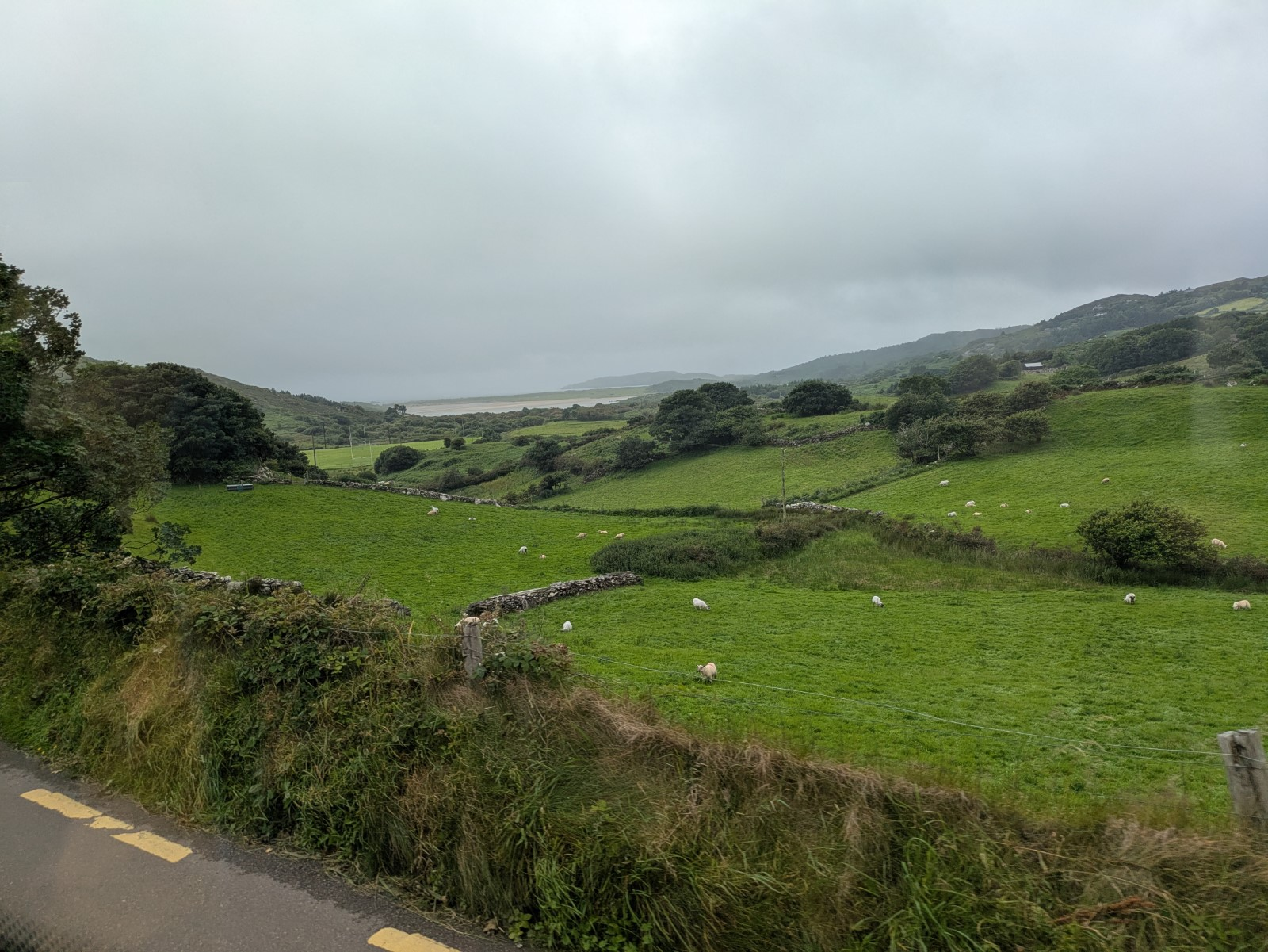
Hedges, Narrow Roads and Roundabouts
Ireland’s hedgerows are more than just boundaries—they’re miniature ecosystems. Thick, wild, and brimming with life, these living fences stretch across the countryside, separating fields and lining narrow roads. Hawthorn, bramble, ivy, and ferns grow in tangled layers, alive with birdsong and buzzing insects. Some hedgerows are hundreds of years old, planted by farmers long gone but still shaping the landscape today.
Driving in Ireland is an experience unto itself. The roads are famously narrow—often just wide enough for one car, even when they’re meant for two. Stone walls or thick hedgerows press in from both sides, and blind curves keep every turn interesting. Passing a tractor or navigating a sheep-covered lane becomes part of the adventure. It can be nerve-wracking at first, but once you settle into the rhythm, it becomes oddly fun. Every drive feels personal, like you’re carving your own path through the landscape.
Forget traffic lights—Ireland runs on roundabouts. These circular intersections keep traffic flowing smoothly, even in small towns and rural roads. At first, they felt chaotic (especially for those of us used to stop signs), but after a few days, they started to feel efficient—and somehow very Irish. They’re a small but memorable part of navigating the landscape.
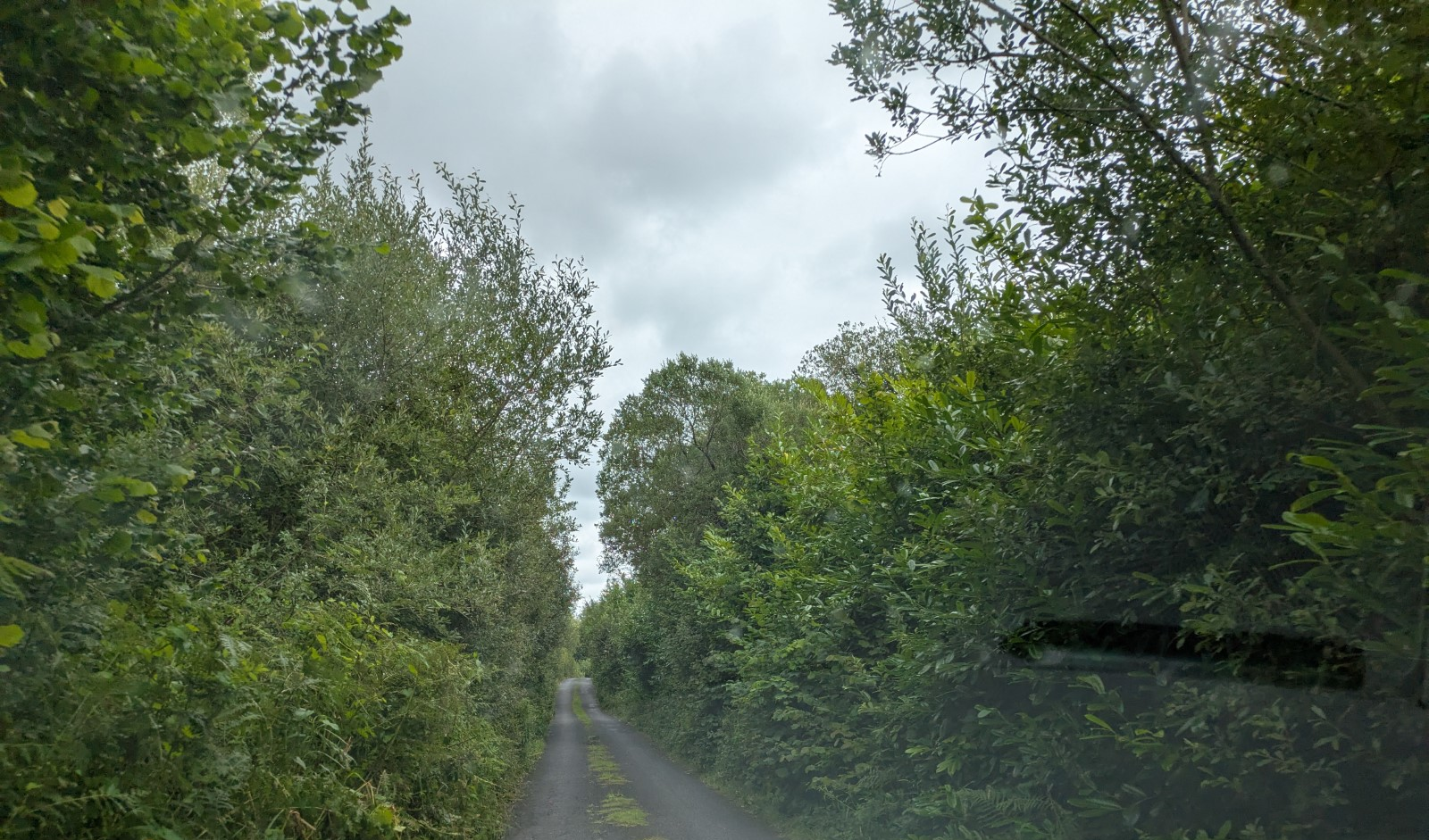
Rain and Clouds
If you visit Ireland expecting perfect weather, you might be disappointed—but if you embrace the mist and clouds, you’ll discover part of what makes the island so magical. The rain here is rarely heavy; it’s more of a constant drizzle, a soft mist that coats the landscape and deepens every color. The skies shift quickly—sunshine and shadow dancing across green hills in a single afternoon. Low clouds cling to mountains, drift over ruins, and soften the light in a way that makes everything feel a little older, a little more sacred. It’s not gloomy—it’s poetic.
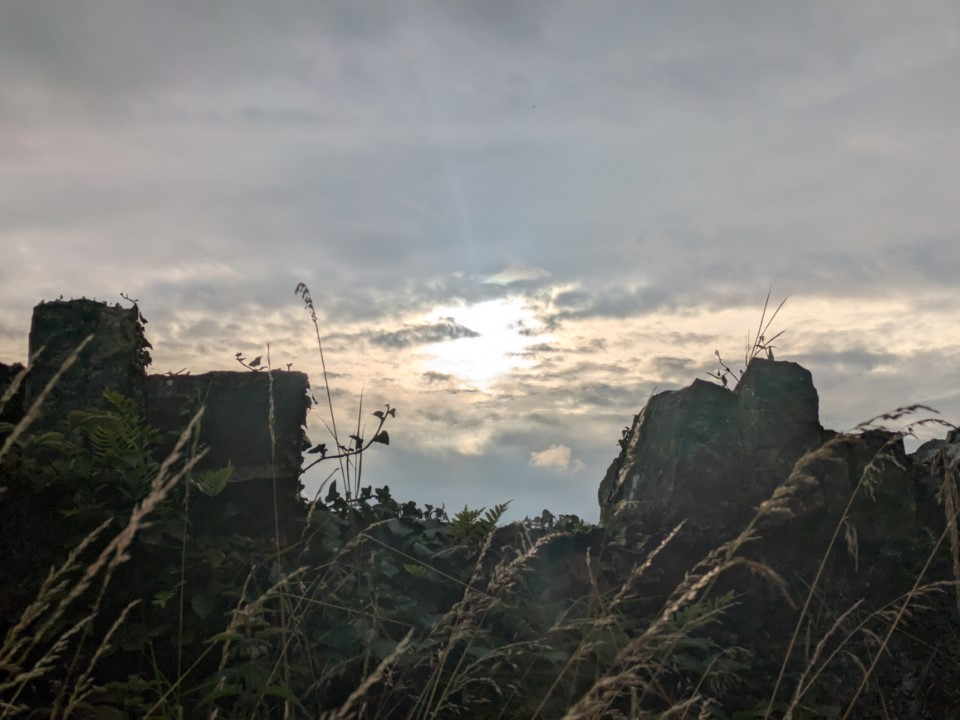
Limestone Walls
Limestone walls crisscross the countryside like ancient signatures etched in stone. Built without mortar, these dry stone walls are feats of quiet engineering. In places like the Burren, the pale grey rock stands out starkly against the greenery. The walls aren’t just functional—they’re beautiful in their simplicity, built by hand and maintained for generations.
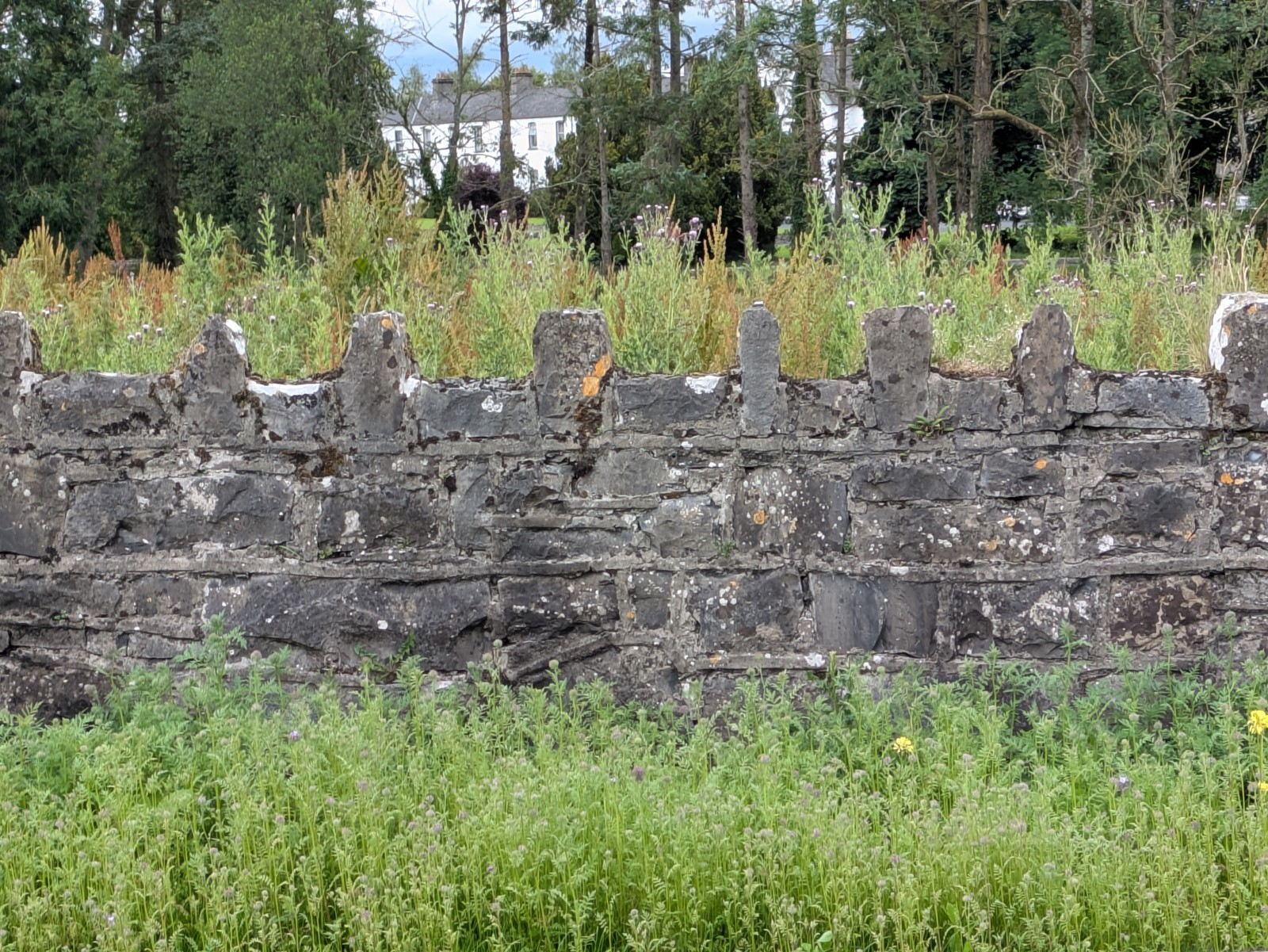
Colorful Mainstreets
Ireland’s towns and villages are full of charm and color. Storefronts are often painted in bright reds, blues, greens, and yellows—cheerful pops of color against the often-gray skies. Window boxes overflow with flowers, and signs appear in both English and Irish, adding to the sense
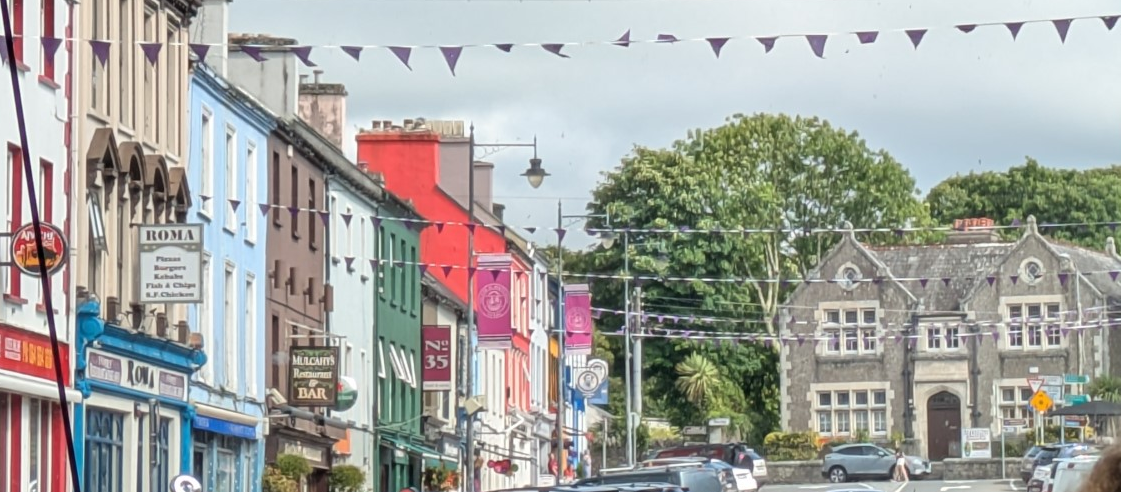
Old Churches and Cemeteries at every turn
No matter how small the village, there always seems to be a church at its heart. Some are grand with towering spires; others are modest stone chapels, weathered by time. Many still ring their bells on Sunday mornings, and some are kept open during the day for quiet reflection. These churches serve not just as places of worship, but as community anchors—hosting local events, festivals, and even village markets in their adjoining halls. Their presence reminds you of Ireland’s deep spiritual roots and the close ties between daily life and faith.
Ireland’s cemeteries are quiet places full of personality. Leaning headstones, Celtic crosses, moss-covered markers, and family plots all hint at generations of life and memory. Some graves date back hundreds of years, their inscriptions faded but still legible with effort. Others are freshly tended with flowers and notes. Many cemeteries surround old churches or stand on their own, tucked behind stone walls or nestled into green hills. Wandering through them feels oddly peaceful—a place where time feels slower and the past speaks in whispers.
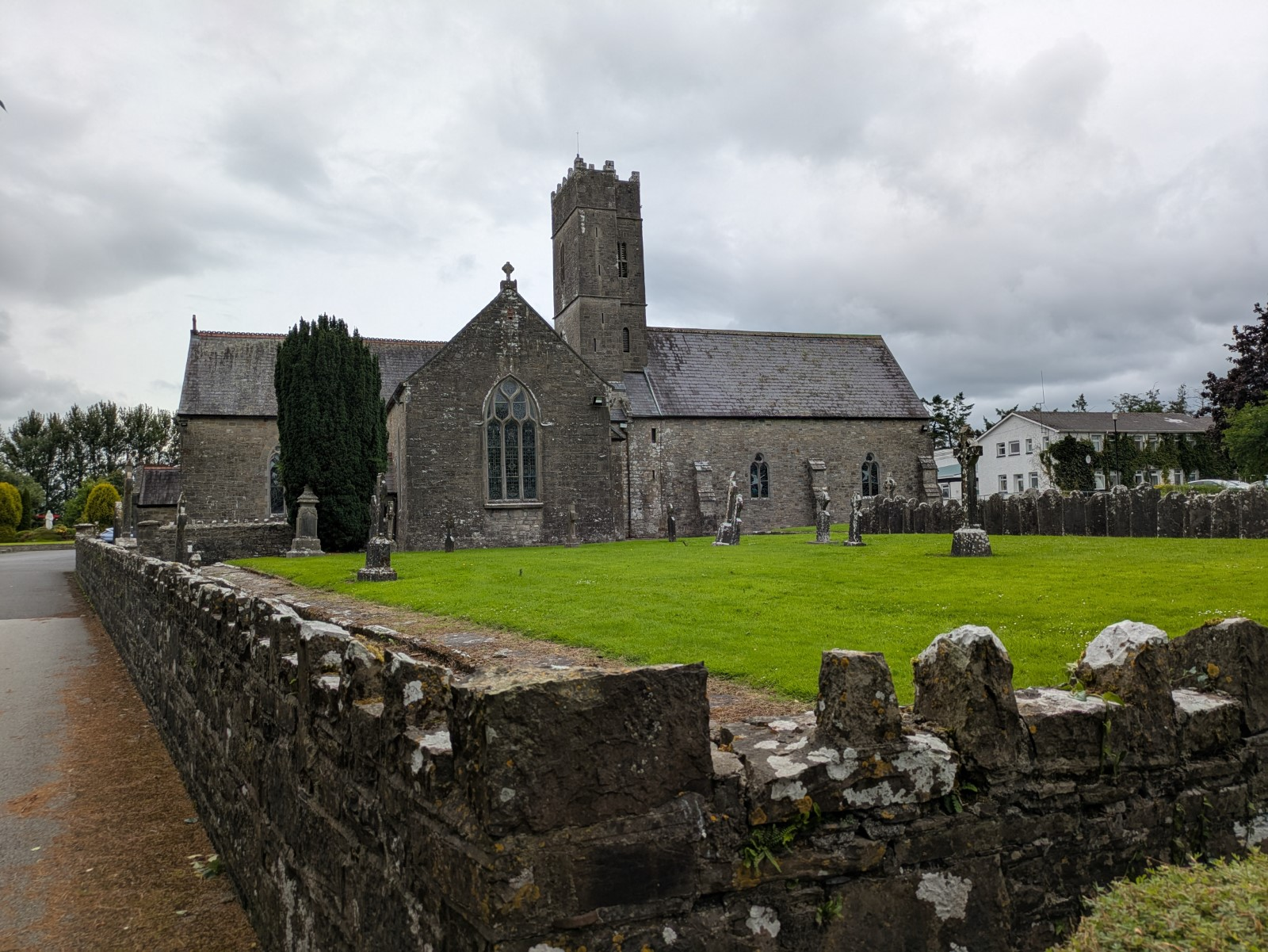
Cathedrals
Then there are the cathedrals—bigger, older, and often breathtaking. Cities and larger towns boast majestic structures like St. Canice’s in Kilkenny, St. Patrick’s in Dublin, or the Cathedral of Christ the King in Mullingar. These buildings are masterpieces of architecture and history, with stained glass windows, vaulted ceilings, and intricate stone carvings that tell stories in silence. Some cathedrals are still in daily use, while others serve more as museums. Either way, stepping inside always feels like entering a sacred story that spans centuries.
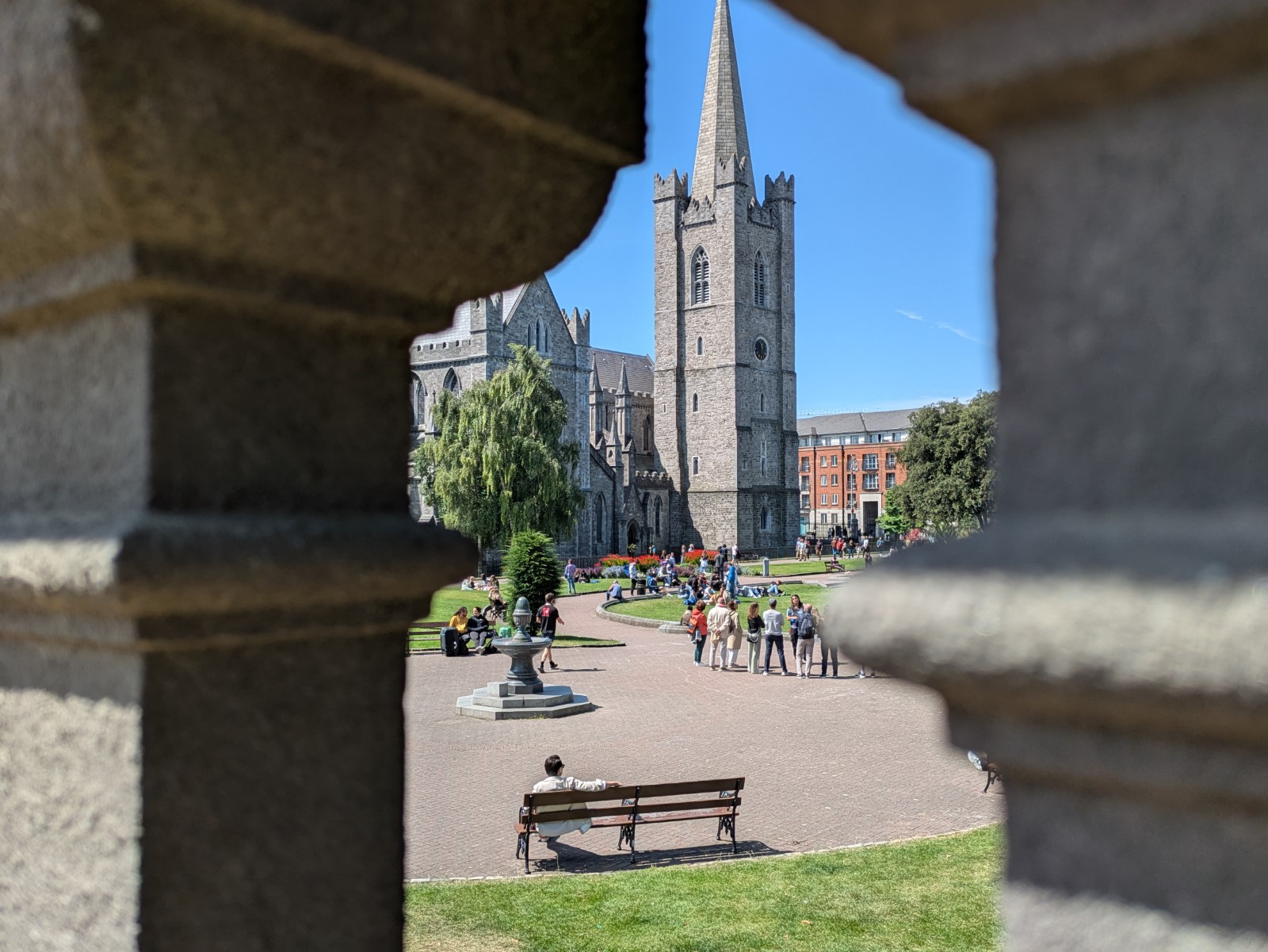
Monastic Ruins
Few places in Ireland stir the imagination like its monastic ruins. These ancient religious sites—like Glendalough, Fore Abbey, and Clonmacnoise—offer glimpses into Ireland’s early Christian heritage. Round towers, crumbling cloisters, and carved high crosses stand as monuments to faith, scholarship, and isolation. Many were once thriving centers of learning and worship, visited by pilgrims from across Europe. Today, their mossy stones and open-air sanctuaries invite reflection and awe. They feel sacred not just in a religious sense, but in a timeless, deeply human one.
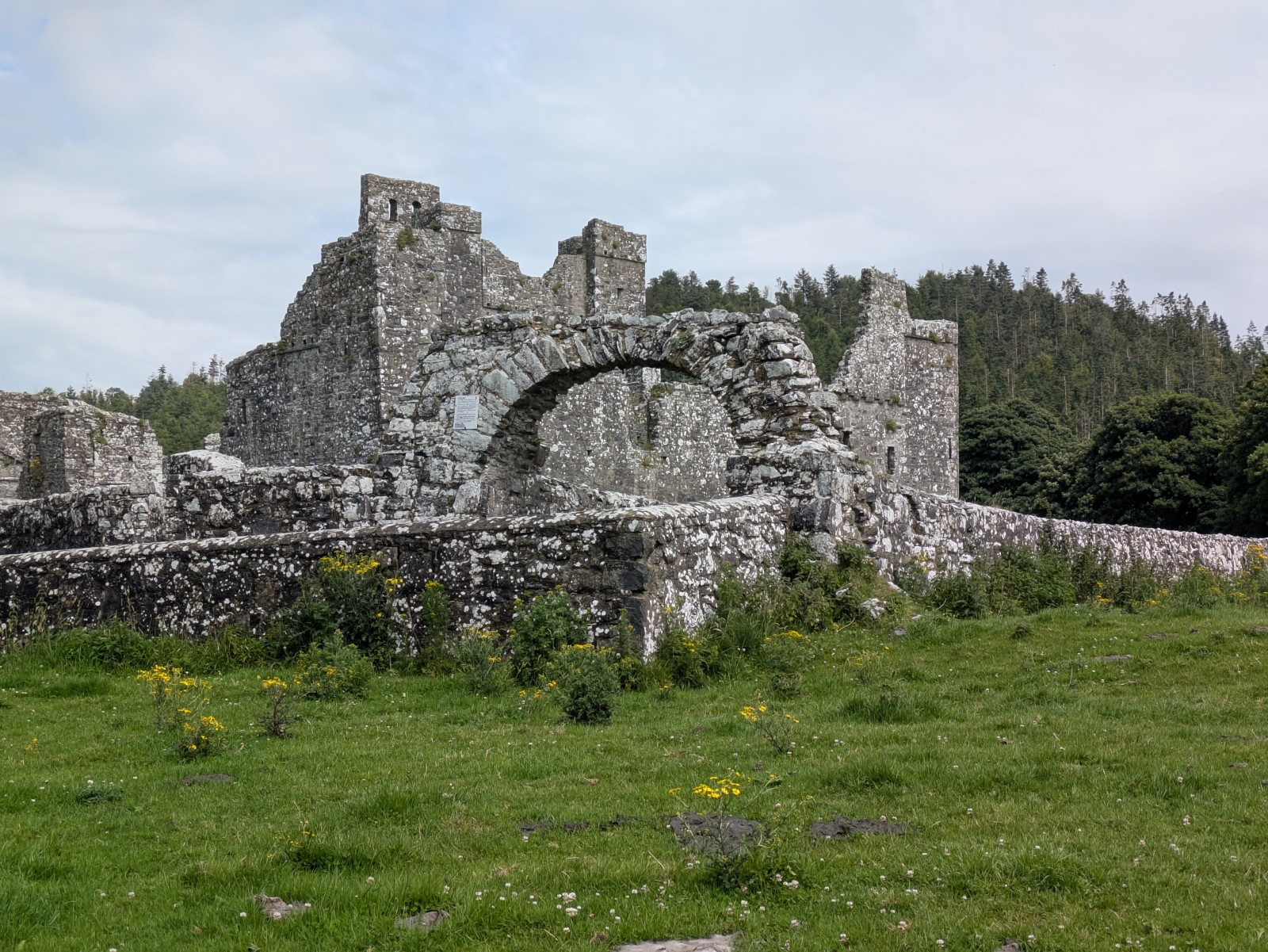
Castles and Towers
You can’t go far in Ireland without spotting a castle—or at least the ruins of one. Tower houses, Norman keeps, and stately homes dot the landscape like echoes of a turbulent past. Some are fully restored and open to visitors; others stand silent and crumbling in a field. Each one holds stories—of clans, kings, sieges, and legends. Climbing a spiral staircase in a centuries-old castle feels like stepping directly into history.
Unique to Ireland, round towers rise above old monastic sites like stone sentinels. Slender and tall, with small doorways high above the ground, these towers once served as bell towers and places of refuge from Viking raids. Seeing one in person is striking—they feel both spiritual and defensive, part of a landscape where faith and history are inseparable.
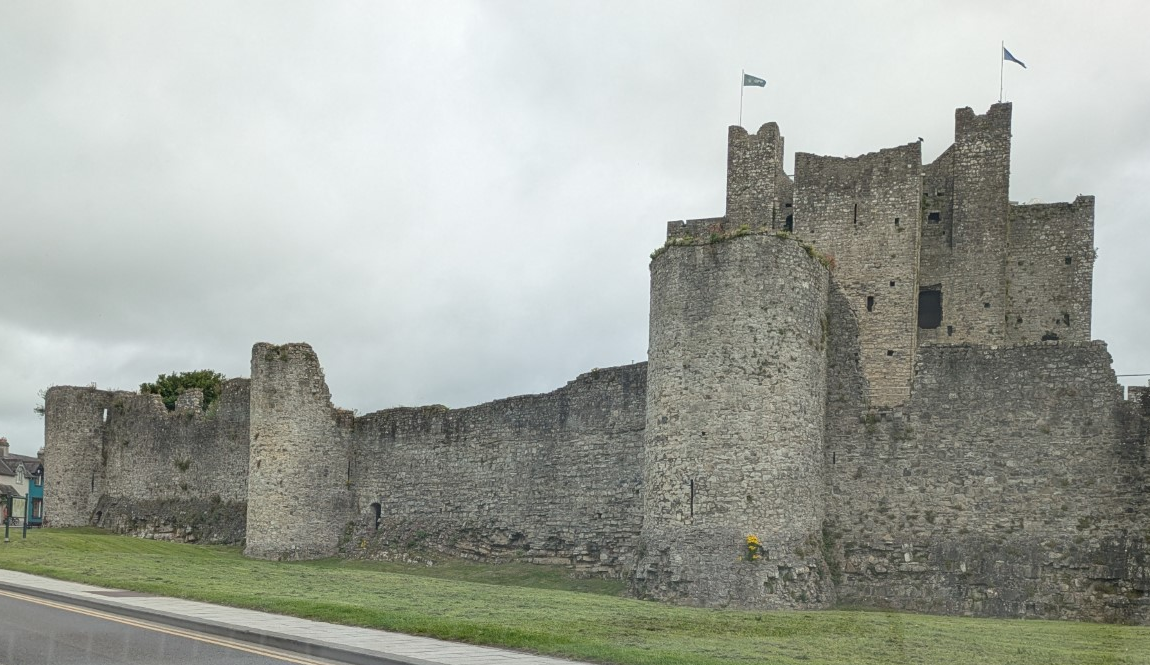
Stone Circles & Megalithic Tombs
Ireland’s ancient monuments—like Newgrange, Loughcrew, and Drombeg—remind us just how long people have lived here. Older than the pyramids, these stone structures were built with astronomical precision and deep spiritual meaning. Standing in one of these sites, you can almost feel time fold in on itself. Myth and memory live in the stones.
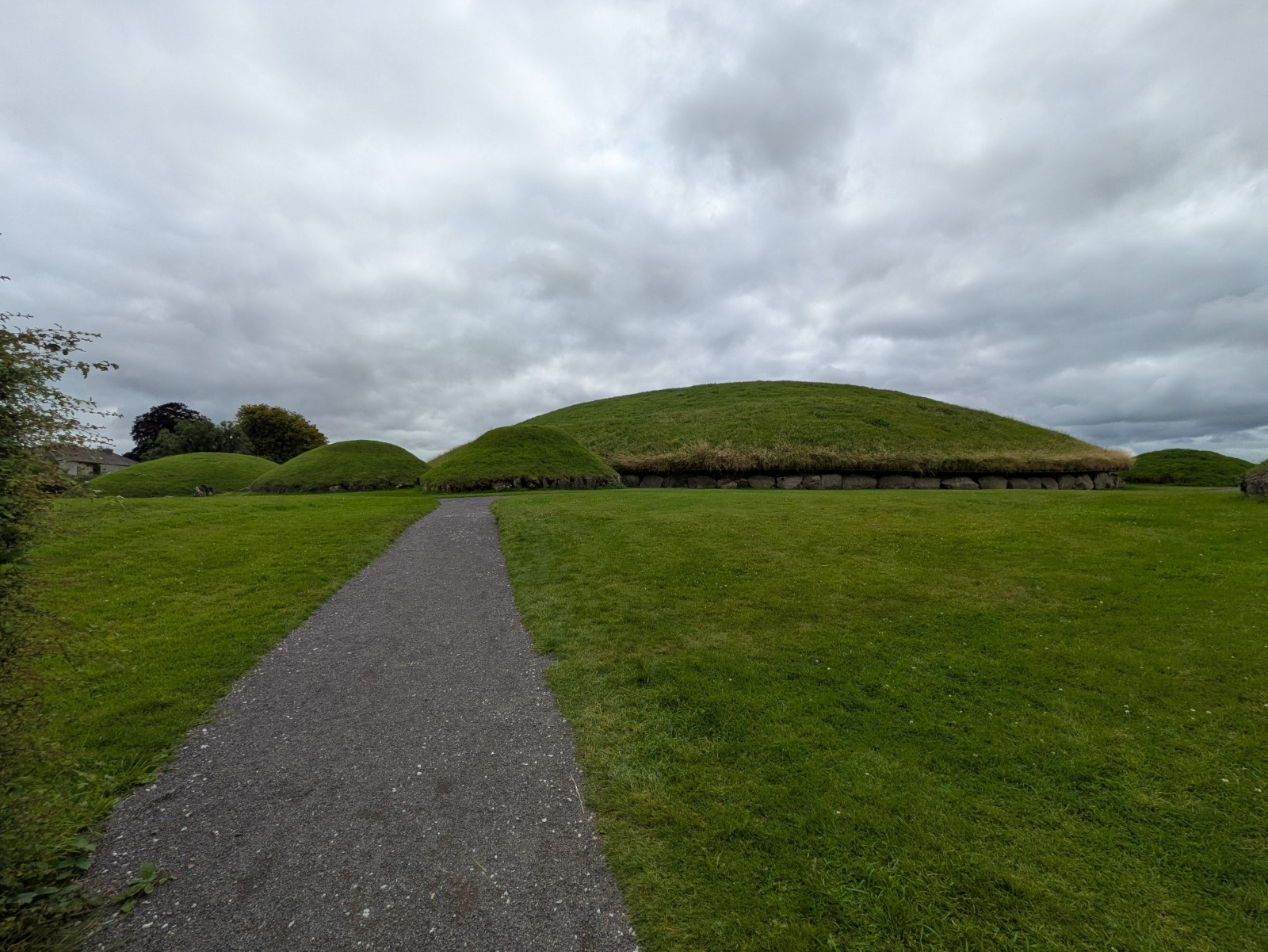
Traditional Music
There’s nothing quite like walking into a cozy pub and hearing live music—fiddles, flutes, and bodhráns filling the air with rhythm and joy. Irish traditional music isn’t just entertainment—it’s identity. Many of the songs are old, passed down through generations, but they still feel alive. Watching locals sing and dance together made us feel like part of something timeless.
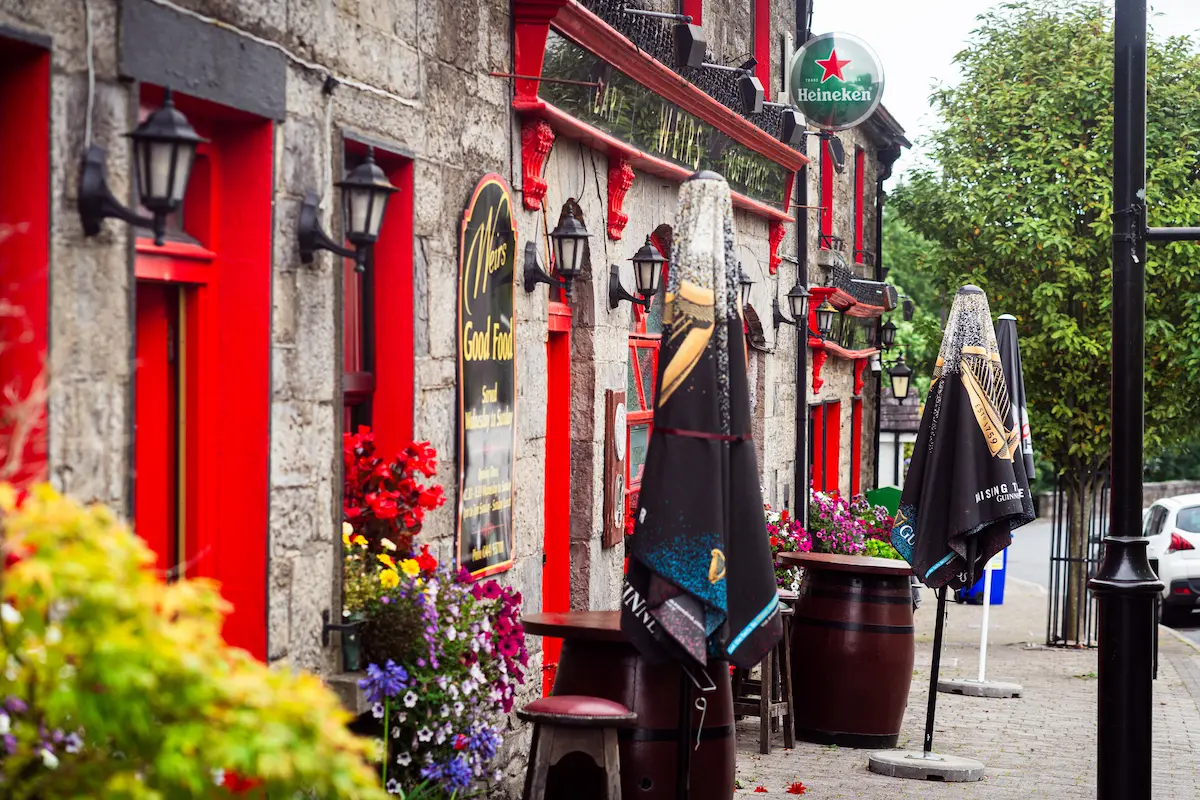
Myths, Language & Lore
Everywhere you go, someone has a story. About a fairy tree, a banshee, a saint, or a king. The Irish love to tell tales—and the country seems built for storytelling. Road signs remind you you’re in a place with its own ancient language: Gaeilge, still spoken in some regions and proudly displayed in all public spaces. The myths and the words give Ireland a voice that speaks from deep time.
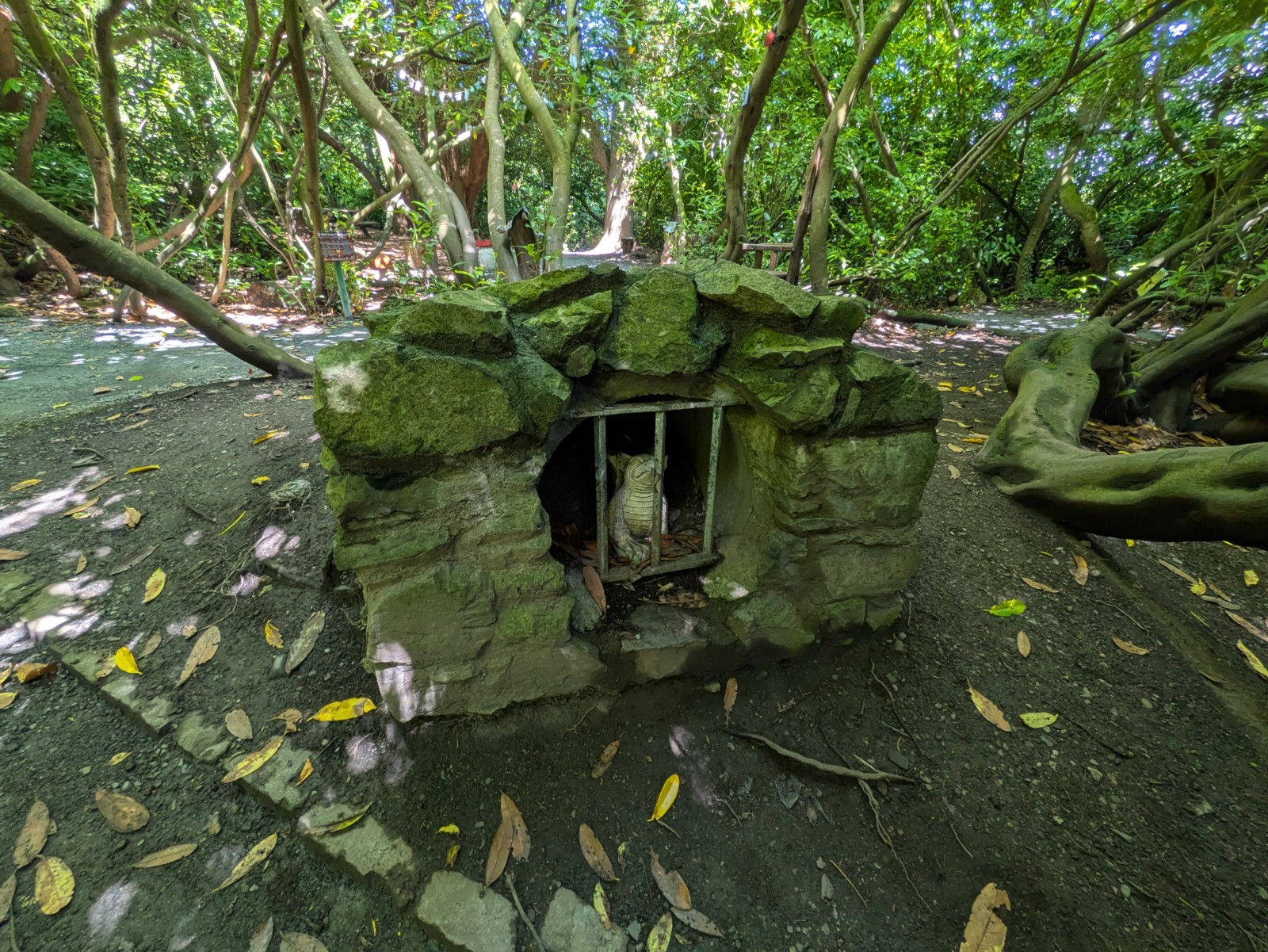
Conclusion
Ireland leaves an impression not through grand gestures, but through small, meaningful details. A moss-covered wall. A tune echoing from a pub. A whisper of mist in a holy place. It’s a land where history and myth walk side by side, where the natural and human worlds are deeply intertwined. These impressions stay with you—not just as memories, but as a quiet longing to return.
| ← Day 23 | Day 25 → |